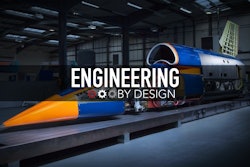Lockheed Tries to Find Way to Put A.I. in Charge of 3D Printing
Lockheed Martin has partnered with the Office of Naval Research to see if they can make artificial intelligence that not only trains robots on how to oversee 3D printing operations, but is also able to adjust the 3D printing process to make sure that quality parts are being made.
The issue is, while 3D printing makes it possible to create part geometries that until now were never before available, if one small section of that part doesn’t meet spec, the entire thing is unusable.
The team is lead by Lockheed Martin's Advanced Technology Center, and it will spend $5.8 million over two years to build custom multi-axis robots that use laser beams to deposit metal material. They want to find new ways that machines can observe, learn, and make decisions to make more consistent parts.
The applications are many as the prospect of using 3D printers to replace the supply chain is an uptime pipe dream. Consider printing replacement parts for remote oil and gas operations, or equipment for soldiers while they are on the battlefield. Really, it's the next step towards actually just-in-time manufacturing — other than the printing materials — where you will soon walk into a store and pick up a newly printed part rather than anything off the shelf.
The team will first work with a common titanium alloy, Ti-6AI-4V. The research will be implemented at various industry, national lab and university partners.
Team Makes Robot Hips More Human
Mercury is a new robot developed over the last six years by researchers from the University of Texas at Austin School of Engineering. It was built to demonstrate how instrumental hips are to making biped robots move like a human.
Mercury moves its hips to maintain balance and avoid collisions, which once again is tested by the researchers rifling objects at the robot.
By taking a basic human skill and turning it into a mathematical equation, the team was able to program autonomous robots to maintain balance. The technique is called inverse kinematics, and it is often used in 3D animation to give cartoon characters realistic-looking movements. Mercury uses low-level motor position controllers, and the work could be used in everything from emergency response to to entertainment.
As they say, these hips don't lie. Well, at least until they're put into the robots at the KinkySdollS robot brothel headed to Houston — then it will likely be part of their standard operating procedure.
‘Human Uber’ Puts You in Control of a Human Surrogate
‘Human Uber' is a new concept from Sony-affiliated Japanese AR/VR researcher, Jun Rekimoto, who recently presented the concept at MIT Tech Review's EmTech conference in Asia. The concept, officially known as the ChameleonMask, is a "telepresence system that displays a remote user’s face on another user’s face".
The researchers wanted to tackle problems with tele-operated robots, for example it’s hard to take a head on a robotic scooter seriously, so they created a human-human augmentation system.
The surrogate views the world through a VR rig, and as the pilot you send commands and hand gestures through interactive software. According to the researchers, the surrogates will be hired to work like a remote user in the physical world, much like a 'human uber' who does our shopping and hangs out with our grandmothers.
Some issues persist, both morally and logistically, but let's stick with logistics. How do you know that you've hired the right driver/surrogate? Do they need the same body type and style? Could I really hire a petite blond woman to watch my son's baseball games while I was out gallivanting in Iowa?
The technology has major implications not only on interpersonal relationships, but what about the effects on the drones? We already had a problem with vetting Uber car drivers, and now we're going to let this person visit our grandmother?
Now, this was merely an example of emerging technology -- and one that has been predicted in the past -- but the researchers contend that it also solves problems, such as eliminating the need for, and crowded space occupied by.tele-operated robots.
This is Engineering By Design.






















